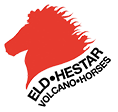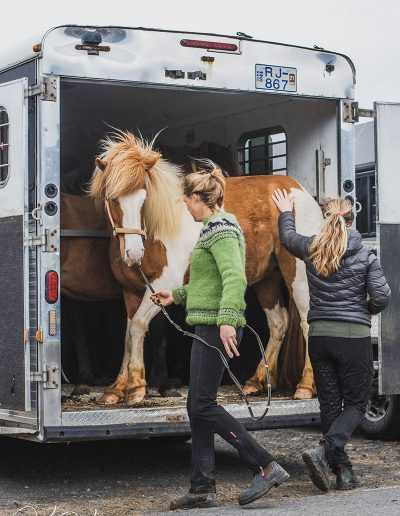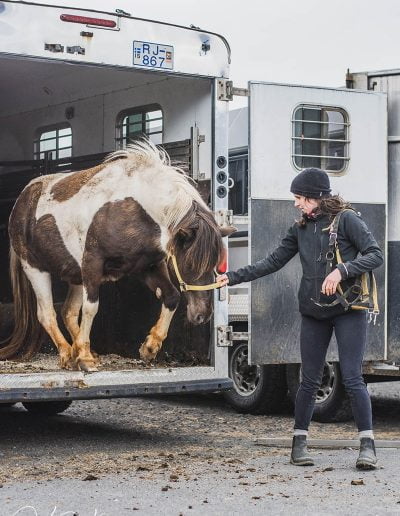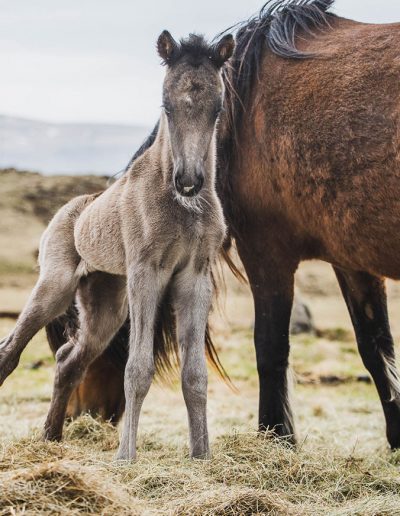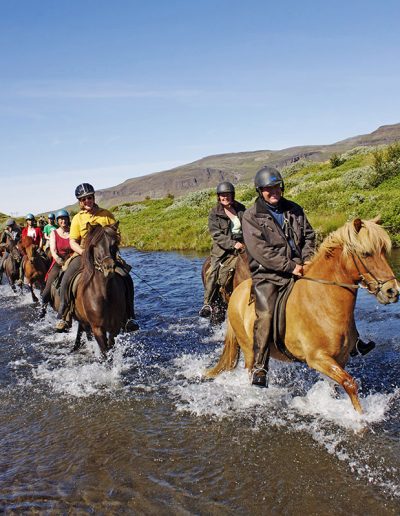Before we turn to our main news in June, here is a feature that was originally for our March Newsletter. Unfortunately, information about Covid-19 bumped the feature. Fortunately, lots of recent news stories have been encouraging, giving us a very good reason to bring it to you now.
Many countries are opening their borders. Flights are starting, and bookings for our riding tours are available again. Following tours will be on schedule in June; Tour 17, Landmannalaugar starting June 21, Tour 10, Thórsmörk starting June 24, and all our hotel tours such as: Tours 7G/H, 8A/B, Tour 8C, the Best of Eldhestar starting June 15 and 30 and Tour 8F, Eldhestar Exclusive starting June 23.
We have been picking up our horses. They’ve “on vacation” for many months. In getting them ready for riding tours, the first step is to shoe them. The news below is about shoeing and the importance of our farriers’ good and precise work.
Meet Our Main Farrier
The Challenge in Shoeing Horses
Written by Daniel van der Blij.
In July 2001 I got my first lesson on how to shoe a horse. To this day the very first lesson is still my main focus and keyword in farriery:
- The shoe shall only be the natural extension of the hoof!

One extremely important thing in farriery and shoeing horses is to read the hoof. This means you have to look at the hoof and see what kind of treatment it needs. Every hoof is unique! The wear of the shoe and the hoof itself can give you an ocean of information when it comes to the general wellbeing of the horse.
Every time the stable responsible brings a horse to me to shoe, I check several things before I even start to pull off the old shoe. I have a system that I worked up during my years in the trade. I check the horse while walking – how the hoof is landing on the ground. How the shoe is worn out, how the hoof has grown, and what shape the hoof has taken since the last shoeing.
After all these steps, I start to pull off the old shoe and begin the trimming. Trimming is one of the most important parts of the process! After trimming, I start to shape the new shoe. It is extremely important where and how you position the shoe on the hoof! One misaligned shoe can easily disturb or damage a horse for a long time. The accuracy tolerance for nail placement is only about 1 millimetre before you risk damaging inner tissues.
When it comes to the training or competition horses, I sometimes have to help them a little with the shoeing. The shoeing can also be different depending on whether the horse is a 4- or 5-gaiter!
A very few horses at Eldhestar need therapeutic shoeing. The problems include lameness, hoof disease or other hoof-related issues. Our horses are usually very sound, strong and well trained. Every summer we need approximately 5500 horseshoes for the entire season, including all long tours and day tours.
Very often people ask me’s about which tour is my favourite. It is extremely hard to answer this question since all tours offer great beauty in nature. But to try to answer it – Kjölur or Landmannalaugar are my favourites. These tours balance a lot of riding and days that are not too long, combined with wild untouched nature. Both tours also give you the feeling of being in “the middle of nowhere”.
Short about Daniel:
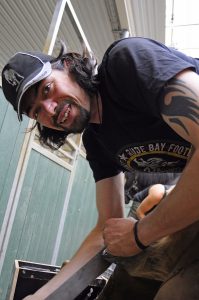
For many years, he taught farriers at the farrier schools Wången and Stömsholm.
Daniel was one of the first farriers in Sweden to earn rights to the title “Farrier Approved by the Agricultural Ministry”.
In 2013, the Swedish Farrier Association honoured Daniel by naming him “Farrier of the Year 2012”.
Since 2018, he has lived and worked fulltime in Iceland at Eldhestar.
